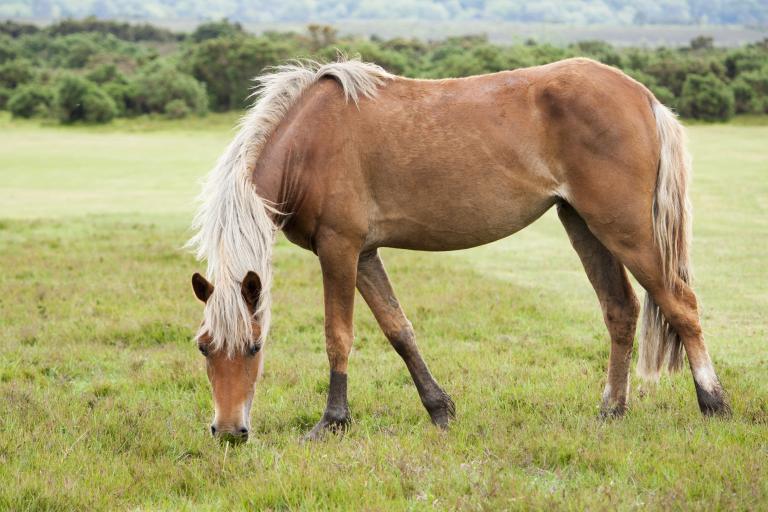Congenital Myotonia (CM Horse)
Congenital myotonia (CM) is caused by a malformed channel protein in skeletal muscle cells and results in impaired movement due to muscle rigidity.
The disease occurs in the New Forest Pony and is inherited in autosomal recessivly.
Genetic Test: available in Shop
Symptoms
- Difficulties rising
- Gait abnormalities
- Muscular rigidity, especially in hindquarters
- Vertigo and occasional falling
- Impaired flexibility of fetlock joints
- Temporary visible third eyelid
- Inward protuberant eyeballs
- Hyperreactivity
- Excessively muscled
General Information
- Congenital myotonia (CM) is caused by a mutation in the gene for the skeletal muscle chloride channel 1 protein (CLCN1).
- Chloride channels are ion channels (conduct ions in and out of the cell) in the cell membrane and have, for example, the function of stabilizing the resting membrane potential in skeletal muscle.
- This is important for the transmission of nerve signals to the muscle, i.e. for contraction of the muscle cells.
- Due to the mutation, the ion channels are dysfunctional and thus muscle movement is impaired.
- Foal may seem healthy when born but symptoms may evolve and worsen over time.
- Symptoms mentioned above are caused by the general muscle stiffness in the affected horse.
Test Information
Genotype and Lab Report
Inheritance: autosomal recessive
→ Only horses with two copies of the variant (cm/cm) are affected. Horses with only one copy (N/cm) are clinically healthy carriers.
Genotypes:
N/N = normal
The horse has no copies of the genetic variant causitive for CM and therefore cannot pass it on to its offspring.
N/cm = a carrier
The horse is clinically healthy. It has one copy of the genetic variant causitive for CM, which will be passed on to its offspring with a probability of 50%.
cm/cm = affected
The horse is affected and has two copies of the genetic variant causitive for CM. The variant will be passed on to its offspring with a probability of 100%. All offspring will be carriers.
Recommendations
- Carriers may be bred to normal animals (N/cm x N/N) without any risk of producing affected offspring. The offspring should also be tested before breeding to determine if they are carriers or normal.
- Breeding two carriers (N/cm x N/cm) is not recommended due to the possibility of 25% of the offspring being affected.
- Affected animals (cm/cm) should not be used for breeding.
Literature
Wijnberg, I.D., Owczarek-Lipska, M., Sacchetto, R., Mascarello, F., Pascoli, F., Grünberg, W., van der Kolk, J.H., Drögemüller, C.: A missense mutation in the skeletal muscle chloride channel 1 (CLCN1) as candidate causal mutation for congenital myotonia in a New Forest pony. Neuromuscul Disord 22:361-7, 2012. Pubmed reference: 22197188. Doi: 10.1016/j.nmd.2011.10.001.
Further information is available at Online Mendelian Inheritance in Animals.

